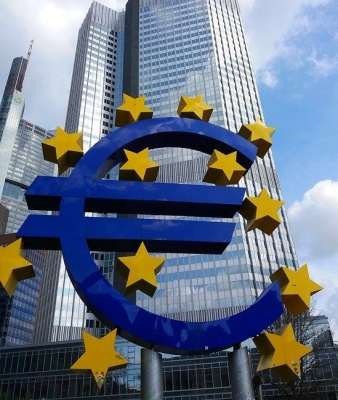
The name ‘euro’ was chosen during the Madrid European Council meeting in 1995. The euro takes its symbol € from the Greek alphabetical letter, epsilon ( ), representing the English letter E of Europe, and its two parallel lines signify the currency’s stability. Sometimes, the euro amounts are also denoted by the ISO code EUR.
The European Community owns the copyright for the euro symbol. The EU Intellectual Property Office also has the right to register logos that bear the euro symbol provided they are slightly different from the original.
The euro is managed and administered by two monetary bodies: the independent European Central Bank (ECB), which has the sole power to set economic policies, and the euro system (composed of the central banks of the eurozone countries), which is involved in the printing, minting, and distribution of notes and coins in all member states, and also in the operation of the eurozone payment systems.
When the euro was first launched in January 2002, designs for 7 banknotes and 8 coins were released. While all euro countries share the same design in the notes, the coins differ by having a standard configuration on one side but a country-specific pattern on the other.
Euro notes are made of cotton fibre and are embedded with intricate security features such as watermarks, invisible ink characteristics, holograms, optically variable inks, and microprinting. The Europa series of banknotes that was released in the past years (€5, €10, €20, €50, €100 and €200) flaunt the portrait of the Greek goddess Europa.
Picture Credit : Google




